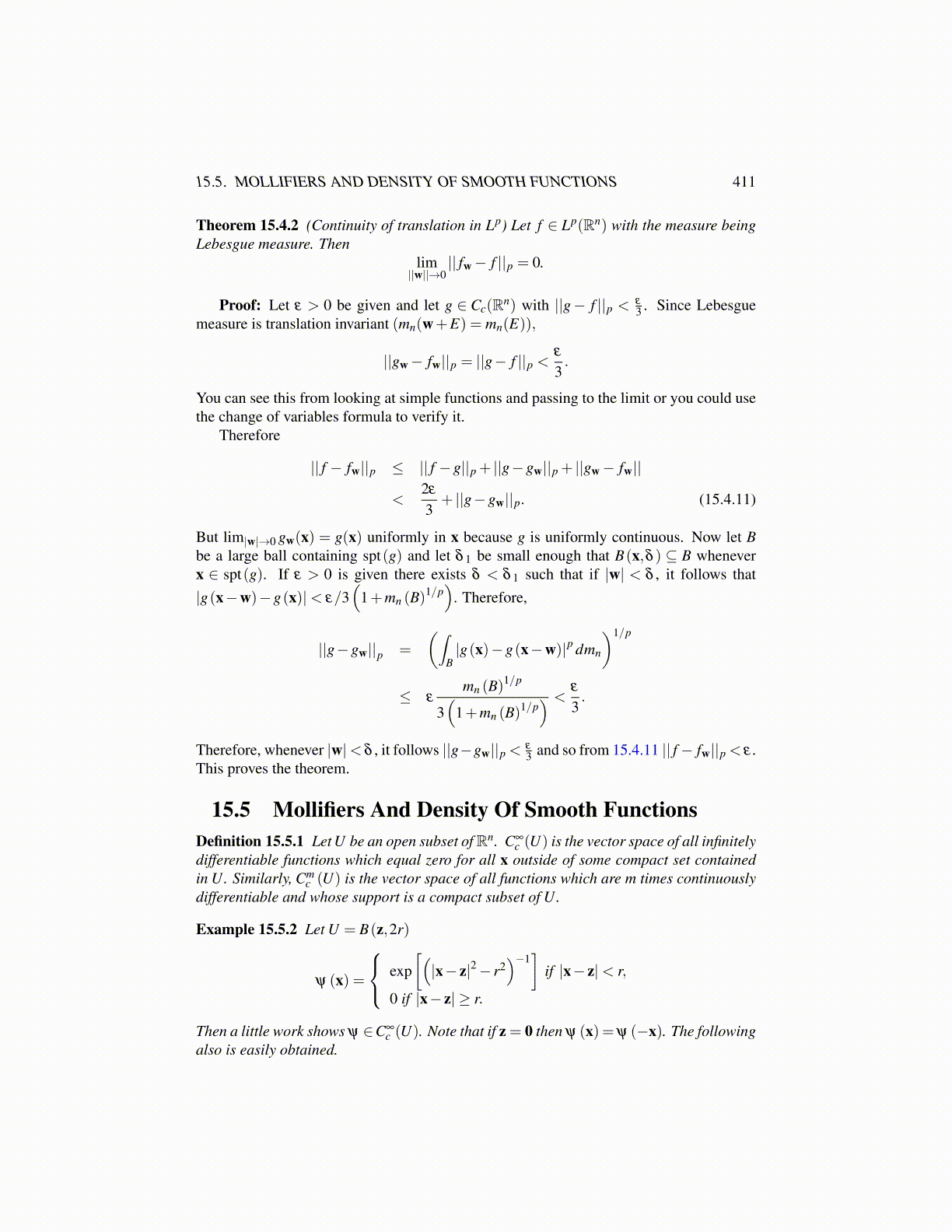
15.5. MOLLIFIERS AND DENSITY OF SMOOTH FUNCTIONS 411
Theorem 15.4.2 (Continuity of translation in Lp) Let f ∈ Lp(Rn) with the measure beingLebesgue measure. Then
lim||w||→0
|| fw− f ||p = 0.
Proof: Let ε > 0 be given and let g ∈ Cc(Rn) with ||g− f ||p < ε
3 . Since Lebesguemeasure is translation invariant (mn(w+E) = mn(E)),
||gw− fw||p = ||g− f ||p <ε
3.
You can see this from looking at simple functions and passing to the limit or you could usethe change of variables formula to verify it.
Therefore
|| f − fw||p ≤ || f −g||p + ||g−gw||p + ||gw− fw||
<2ε
3+ ||g−gw||p. (15.4.11)
But lim|w|→0 gw(x) = g(x) uniformly in x because g is uniformly continuous. Now let Bbe a large ball containing spt(g) and let δ 1 be small enough that B(x,δ ) ⊆ B wheneverx ∈ spt(g). If ε > 0 is given there exists δ < δ 1 such that if |w| < δ , it follows that|g(x−w)−g(x)|< ε/3
(1+mn (B)
1/p)
. Therefore,
||g−gw||p =
(∫B|g(x)−g(x−w)|p dmn
)1/p
≤ εmn (B)
1/p
3(
1+mn (B)1/p) <
ε
3.
Therefore, whenever |w|< δ , it follows ||g−gw||p < ε
3 and so from 15.4.11 || f − fw||p < ε .This proves the theorem.
15.5 Mollifiers And Density Of Smooth FunctionsDefinition 15.5.1 Let U be an open subset ofRn. C∞
c (U) is the vector space of all infinitelydifferentiable functions which equal zero for all x outside of some compact set containedin U. Similarly, Cm
c (U) is the vector space of all functions which are m times continuouslydifferentiable and whose support is a compact subset of U.
Example 15.5.2 Let U = B(z,2r)
ψ (x) =
exp[(|x− z|2− r2
)−1]
if |x− z|< r,
0 if |x− z| ≥ r.
Then a little work shows ψ ∈C∞c (U). Note that if z = 0 then ψ (x) =ψ (−x). The following
also is easily obtained.